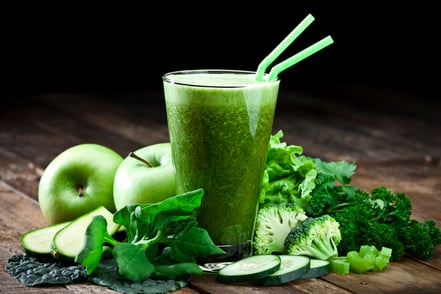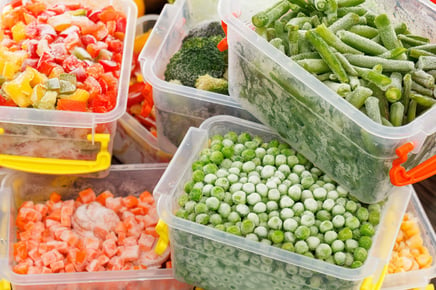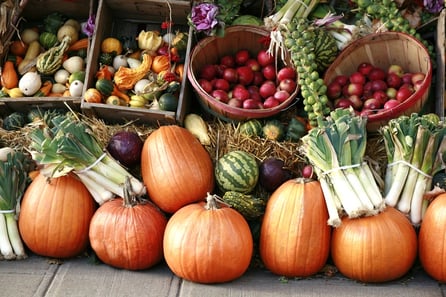 Did you know it is estimated that food loss and food waste account for more than 8 percent of total human-made greenhouse gas emissions, a leading driver of climate change? According to the US Department of Agriculture (USDA), it is estimated that 30–40 percent of the food supply (130 billion pounds of food) goes to waste each year. Additionally, the United Nations has claimed that if global food waste were able to represent its own country, it would be the third largest greenhouse gas emitter, following China and the US. Fortunately, you can help cut back on your personal food waste by reducing, reusing, and recycling your leftovers. Here’s how.
Did you know it is estimated that food loss and food waste account for more than 8 percent of total human-made greenhouse gas emissions, a leading driver of climate change? According to the US Department of Agriculture (USDA), it is estimated that 30–40 percent of the food supply (130 billion pounds of food) goes to waste each year. Additionally, the United Nations has claimed that if global food waste were able to represent its own country, it would be the third largest greenhouse gas emitter, following China and the US. Fortunately, you can help cut back on your personal food waste by reducing, reusing, and recycling your leftovers. Here’s how.
Reduce
Reduce your meat consumption. Animal agriculture is a leading cause of deforestation. Additionally, in the US, livestock and their waste are the largest contributor of methane, a greenhouse gas that has a significantly larger impact on our planet than carbon dioxide.
You can also reduce your consumption of “exotic” or hard-to-find fruits and vegetables and choose those that are locally grown or in season. Check out what fruits and vegetables are currently in season in the USDA Seasonal Produce Guide.
- You can also do things to reduce your food and food packaging waste.
- Plan a list for the grocery store to avoid purchasing more food than you need.
- Choose paper or cardboard packaging rather than plastic.
- Opt for items available in bulk and limit single-use containers and packaging.
- Purchase reusable sandwich or snack bags rather than single-use plastic bags.
- Learn how to properly freeze foods, rather than throwing away leftovers or unused foods.
Reuse
Reuse leftover food. You can find some tips and tricks for reusing leftovers at the Move for Hunger website.
Use plastic water bottles more than just once. Or purchase an aluminum reusable water bottle to eliminate your plastic waste while keeping your drink cool.
Reuse shopping bags as trash can liners, animal waste bags, or fillers for shoes/purses to help them maintain their shape. Or you can purchase reusable shopping bags for your grocery trips to significantly cut back on your plastic waste.
Recycle
Recycle your food waste by composting. Turn your leftover fruits, vegetables, coffee grounds, nutshells, newspaper, and more into soil for growing plants, perhaps even those that you can eat. Visit the US Environmental Protection Agency’s guide to Composting at Home.
Recycle paper and plastic products, when and where possible. If you’re not able to add something to the recycling bin, consider other ways you can utilize it.
This blog was written by Lindsey Recker, MS, RD, NIFS Registered Dietitian. To learn more about the NIFS bloggers, click here.


 We’ve all been here before: When it seems the long, gray winter will never end and you make one more pot of hearty vegetable soup or another casserole; or when the lackluster tomatoes and almost pinkish-white strawberries just aren’t cutting it. It’s time to get creative!
We’ve all been here before: When it seems the long, gray winter will never end and you make one more pot of hearty vegetable soup or another casserole; or when the lackluster tomatoes and almost pinkish-white strawberries just aren’t cutting it. It’s time to get creative!
 ’Tis the season for swapping Christmas cookies, candy bowls, Hanukah dinners, holiday parties, and New Year’s Eve libations. We’ll take this month to refocus on a 10 simple ways to keep your body properly nourished and healthy this holiday season while keeping in mind that it is okay and certainly encouraged to partake in the holiday season festivities. New Year’s Resolutions are a great time to start new habits, but why not get a head start?
’Tis the season for swapping Christmas cookies, candy bowls, Hanukah dinners, holiday parties, and New Year’s Eve libations. We’ll take this month to refocus on a 10 simple ways to keep your body properly nourished and healthy this holiday season while keeping in mind that it is okay and certainly encouraged to partake in the holiday season festivities. New Year’s Resolutions are a great time to start new habits, but why not get a head start? Since you were young you probably have been told to eat your fruits and vegetables. Fruits and vegetables are the nutritional powerhouses of your diet. They offer essential vitamins, minerals, fiber, and phytochemicals that not only keep your body healthy, but also protect against cancer, heart disease, stroke, and other health conditions. During the winter months, fresh fruits and vegetables are more limited and generally more expensive. As a result, many of us turn to canned or frozen options. So are canned and frozen options just as healthy as the fresh produce we consume?
Since you were young you probably have been told to eat your fruits and vegetables. Fruits and vegetables are the nutritional powerhouses of your diet. They offer essential vitamins, minerals, fiber, and phytochemicals that not only keep your body healthy, but also protect against cancer, heart disease, stroke, and other health conditions. During the winter months, fresh fruits and vegetables are more limited and generally more expensive. As a result, many of us turn to canned or frozen options. So are canned and frozen options just as healthy as the fresh produce we consume? The air is crisp, football season is in full swing, and the plentiful bounty of summer’s gardens is all gone. Instead of reverting back to the frozen fruit and veggie staples that are typical of fall and winter, experiment with some of the tasty foods that give fall the name the harvest season!
The air is crisp, football season is in full swing, and the plentiful bounty of summer’s gardens is all gone. Instead of reverting back to the frozen fruit and veggie staples that are typical of fall and winter, experiment with some of the tasty foods that give fall the name the harvest season!